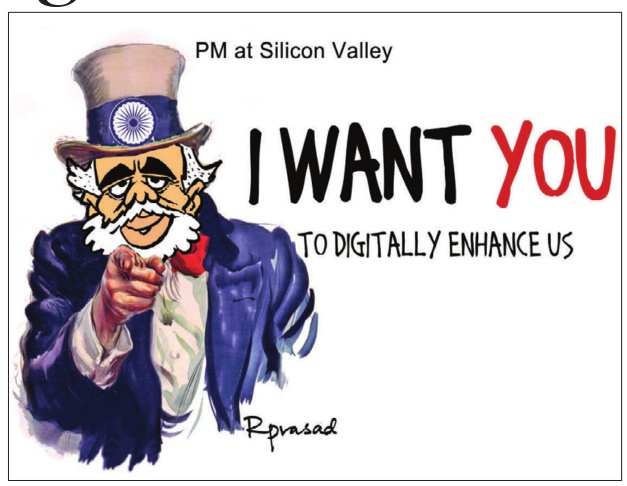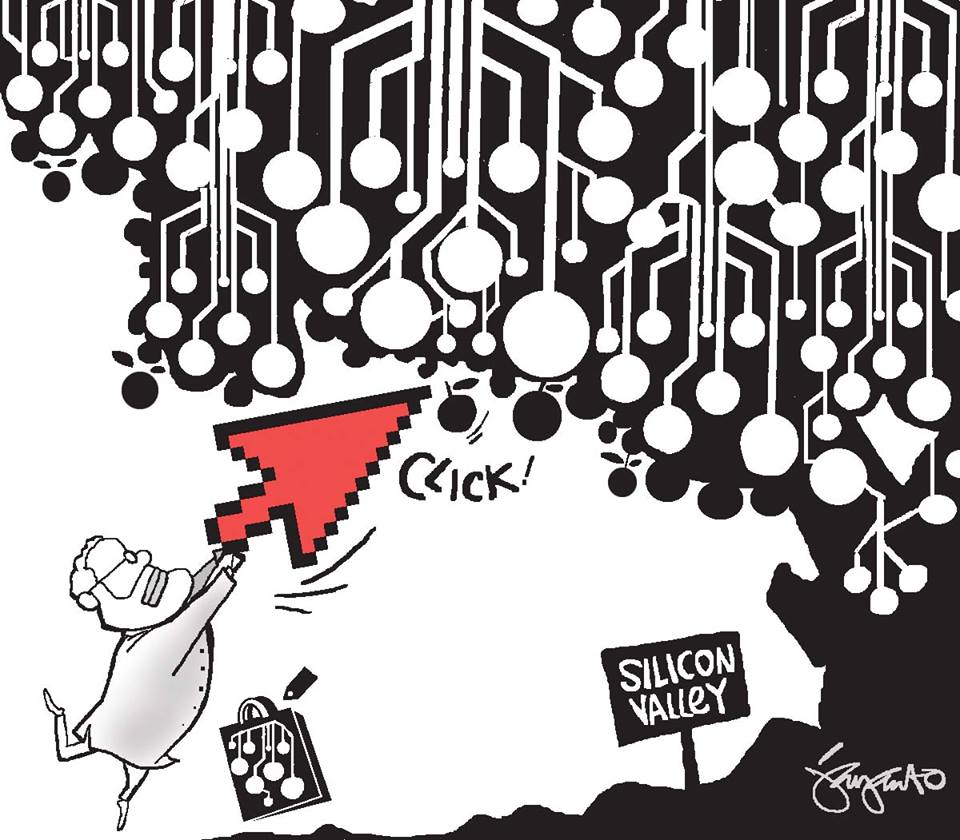WASHINGTON: Impressed by Google's flagship Project Loon - that takes internet to the remote and inaccessible areas - Prime Minister Narendra Modi believes this has multiple uses like long distance education, rural schools and telemedicine, officials said.
He was given a briefing about Loon during his tour to the Google headquarters in the Silicon Valley over the weekend.
Google officials told PM Modi that they were already doing a pilot project in Andhra Pradesh and the idea is to target rural areas which still do not have internet penetration.
"So, the Prime Minister felt that this could be a very very significant innovation to help us with rural connectivity," Ministry of External Affairs spokesman Vikas Swarup said.
He was given a briefing about Loon during his tour to the Google headquarters in the Silicon Valley over the weekend.
Google officials told PM Modi that they were already doing a pilot project in Andhra Pradesh and the idea is to target rural areas which still do not have internet penetration.
"So, the Prime Minister felt that this could be a very very significant innovation to help us with rural connectivity," Ministry of External Affairs spokesman Vikas Swarup said.
The Google officials said their research tells them that 160 million people can be lifted out of poverty if given internet access.
"So, the Prime Minister immediately felt applications of Project Loon in areas such as long distance education, rural schools and telemedicine etc. And they said that the technology exists to scale up," Mr Swarup said.
"As of now, it simply a means to deliver internet to places where no internet exists, but depending on what the requirements are, this could be scaled up," he added.
In his interaction with Google officials, the Prime Minister talked about his favourite concept called 'JAM' where the 'J' stands for the Jan Dhan Yojana, the 'A' stands for the Aadhaar platform and the 'M' stands for mobile governance.
PM Modi told them that the Jan Dhan Yojana is more or less done, 180 million people who were outside the banking sector have now been covered by bank accounts.
The Aadhaar project is about 90 per cent done. "But mobile governance is where he wanted to move on next and that is where he sought inputs from Google, how that could be made possible," Mr Swarup said.
Specifically, there was a discussion on the possibilities of Google technologies for the agricultural sector in terms of if they could develop algorithm etc. to predict rainfall or to say what is going to happen next in terms of crop patterns etc. which could really be of transformative use in agriculture, he added.
"So, the Prime Minister immediately felt applications of Project Loon in areas such as long distance education, rural schools and telemedicine etc. And they said that the technology exists to scale up," Mr Swarup said.
"As of now, it simply a means to deliver internet to places where no internet exists, but depending on what the requirements are, this could be scaled up," he added.
In his interaction with Google officials, the Prime Minister talked about his favourite concept called 'JAM' where the 'J' stands for the Jan Dhan Yojana, the 'A' stands for the Aadhaar platform and the 'M' stands for mobile governance.
PM Modi told them that the Jan Dhan Yojana is more or less done, 180 million people who were outside the banking sector have now been covered by bank accounts.
The Aadhaar project is about 90 per cent done. "But mobile governance is where he wanted to move on next and that is where he sought inputs from Google, how that could be made possible," Mr Swarup said.
Specifically, there was a discussion on the possibilities of Google technologies for the agricultural sector in terms of if they could develop algorithm etc. to predict rainfall or to say what is going to happen next in terms of crop patterns etc. which could really be of transformative use in agriculture, he added.




